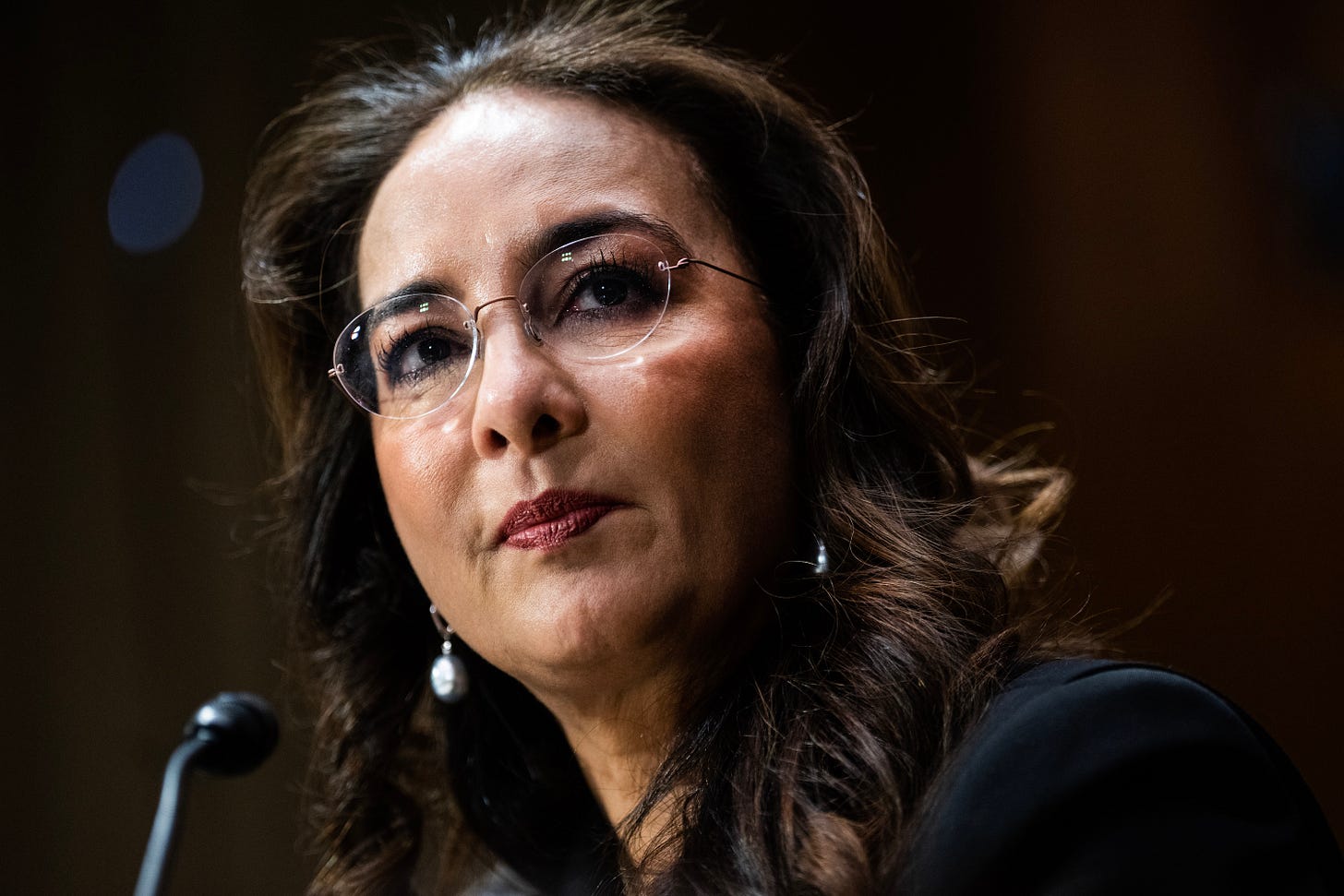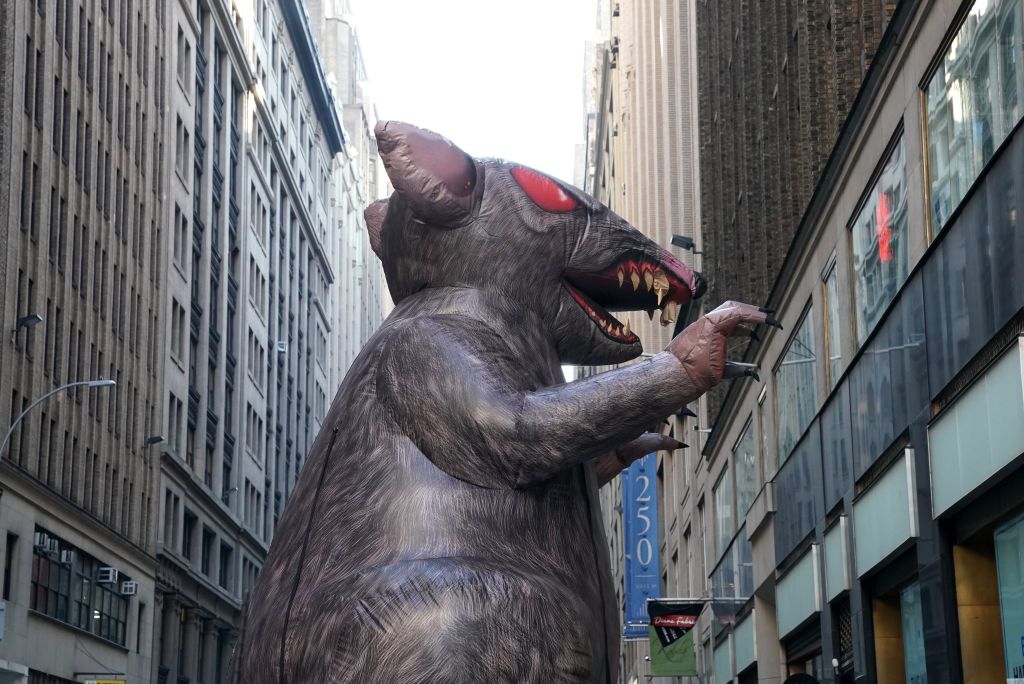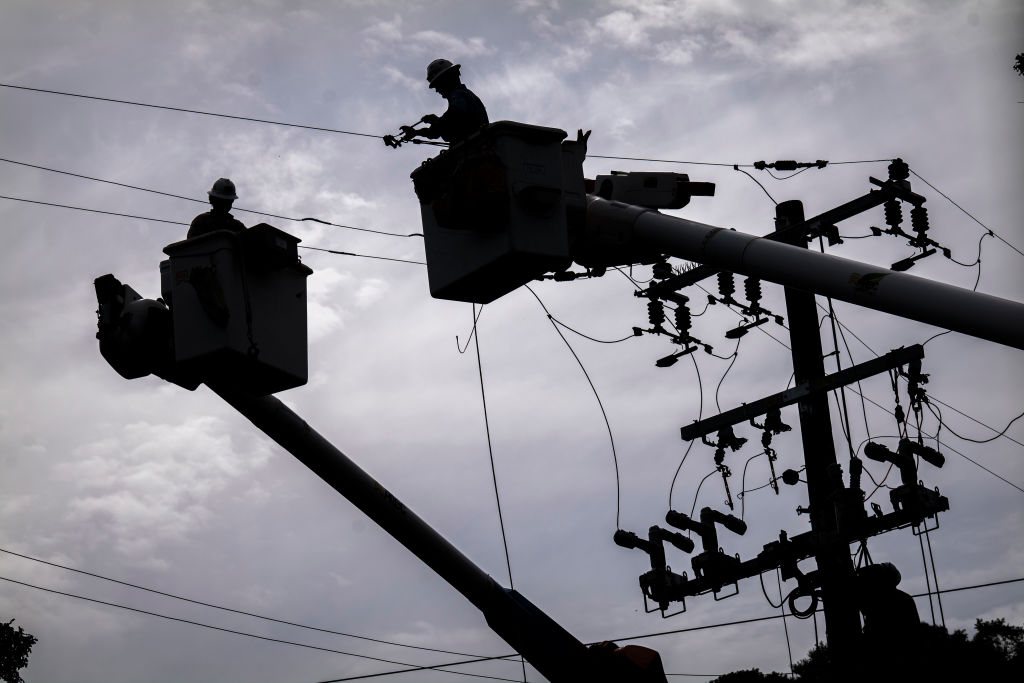
Burials begin for victims in the Dominican nightclub collapse that killed 221
April 11, 2025
Beijing slaps 125% tariffs on U.S. goods in latest U.S.-China trade escalation
April 11, 2025
IN THE FIRST WEEKS OF PRESIDENT TRUMP’S second term, the administration undertook a series of troubling steps to transform the U.S. Department of Justice into an armed political organ. As we have already seen, the politicization of DOJ can protect Trump’s allies from accountability for criminal activity. But for the average American, the much more troubling pattern is the dismantling of the DOJ’s Civil Rights Division, which provides oversight and accountability for state and local law enforcement institutions.
While immigration enforcement has garnered a lot of public attention—for good reason—there’s a logistical limit on how many people the federal government can yank off the street. The dangers to most Americans’ liberties are unlikely to come from federal agencies because the feds lack the requisite personnel to cover the vast area of the United States and hundreds of millions of Americans.
As of 2020, the most recent year for which data are available, there were about 137,000 full-time federal law enforcement officers, or about one per every 2,400 Americans. But adding in state and local officers would, in a back-of-the-envelope calculation, bring that ratio as low as perhaps one officer for every 350 people. Those non-federal officers are distributed among about 18,000 agencies across the country, often with overlapping jurisdictions. One benefit of federalism is that it helps ensure that no single department can become too powerful.
But American history has taught that even small departments can be plenty abusive. Congress originally established the Department of Justice as a bulwark of civil rights protection against terrorists, ex-slave owners, and the Southern states looking to reestablish white supremacy after the Civil War. Although the department strayed far from its initial function, Congress eventually created the Civil Rights Division in 1957, as some states still enforced segregation and recognized neither the letter nor the spirit of the Fourteenth, Fifteenth, and Nineteenth Amendments.
For the past seven decades, the Division has acted as a sort of police of the police. When government officials—especially those with badges and guns—violate Americans’ rights rather than protecting them, it often falls to the Division to enforce the law against law enforcement.
OCCASIONALLY, THE DIVISION PARTICIPATES in prosecutions, such as the prosecution of Derek Chauvin, the police officer who murdered George Floyd. In other cases, the Division opens “pattern and practice investigations” that focus on agencies rather than individual officers. Such investigations often result in consent decrees: agreements between the DOJ and the offending police department to implement policy changes to improve their civil rights record. A judge monitors these agreements until the department has demonstrated full compliance. (Some departments, like some criminals, exhibit recidivism.)
Sometimes called the “crown jewel” of the department, the Civil Rights Division has, in recent years, been marked by fundamental differences in priorities depending on the party in power: preserving voting rights and reining in police violence versus combating “reverse racism.” But even in the context of previous controversies, the Trump administration has undertaken a dramatic reimagining of the office. In Trump’s first days this term, the administration “ordered the civil rights division to halt much of its investigative activity dating from the Biden administration and not pursue new indictments, cases or settlements,” according to the Washington Post.
Earlier this month, the Senate confirmed Harmeet Dhillon to head the Civil Rights Division. Dhillon, a lawyer who helped Trump spread the Big Lie about voter fraud in the 2020 election, is an ardent culture warrior and will likely be a major figure in the administration’s war on DEI. But even more pernicious would be a policy—likely unofficial—of looking the other way on police abuse, leading to federal tolerance of over-policing policies like “stop and frisk” and racially biased pretextual stops of drivers, not to mention another indefinite pause on federal pattern and practice investigations of police departments suspected of widespread civil rights violations.
THE APPARENT EXCEPTIONS to the investigatory pause are telling.
The Civil Rights Division would likely be involved in negotiating and enforcing a consent decree with Columbia University over allegations of antisemitic policies, which the Wall Street Journal reported the administration was seeking Thursday. By itself, that wouldn’t be out of the ordinary—the Journal notes that the DOJ entered consent decrees with Brown and Rutgers over antisemitism issues. But in this case, the administration is blackmailing Columbia with $400 million of federal funding, possibly illegally, which in effect would make the Division a party to an official shakedown operation.
Separately, Attorney General Pam Bondi has made Second Amendment protections a priority for Trump’s second term. Late last month, the Division announced a pattern-and-practice investigation into the Los Angeles Police Department for imposing unnecessary delays in granting concealed carry permits for lawful gun owners. Certainly, local governments ought to follow federal law regarding gun rights without undue obstruction, so some federal attention may be prudent. But when compared with other police behavior—even just within Los Angeles County—the commitment of significant federal investigative resources and energy to what is primarily a bureaucratic headache seems misplaced.
In 2021, California Attorney General Xavier Beccera opened a civil rights investigation into the Los Angeles Sheriff’s Department. The LASD has faced numerous allegations of jail abuse, questionable uses of lethal force, and even multiple criminal gangs operating within the department. A policy expressly prohibiting gang membership went into effect in 2024, following the state’s investigation and an extensive civilian oversight report. In separate incidents in just the last few months, LASD deputies have pleaded guilty to violating the civil rights of a trans man during a traffic stop and have been found guilty of deprivation of rights under color of law—i.e., excessive force—for throwing a woman to the ground because she tried to record an arrest with her phone. Notably, Bondi’s Justice Department removed the press release about the trans man case from its website, raising serious questions about whether transgender Americans fall outside of this DOJ’s understanding of universal civil rights protections from police violence.
ANNOUNCING OPEN SEASON ON POLICING would be bad enough in any administration, but it’s particularly alarming given some of Trump’s other actions, including:
At the same time, Republican governors and other officials have already expressed their enthusiasm to help enforce immigration law despite having no obligation to do so, violating the principles of federalism and sometimes state laws. In fact, Republican legislators at the state level have been itching to use state governments to enforce—or over-enforce—federal immigration policy for years. And, as Jessica Pishko has documented, sheriffs around the country have pledged fealty to the president, even against state limits on their authority.
More than most politicians, Trump’s rhetoric and actions blur the lines between politics, law, and policy. He governs with the same bombast as a Fox News infotainment show, ignoring pesky problems such as facts, policy analysis, or legal authority. Trump may have best encapsulated the difference between his first and second terms when he said: “The second term, I think, is more powerful. When I say, ‘Do it,’ they do it.” There’s no reason to suspect that Dhillon and others at DOJ won’t take Trump’s invitations to police violence and general impunity for perceived allies as official policy.
It’s not unrealistic to worry that Trump will attempt to use federal power directly against citizens. He has already “floated the idea,” in the White House’s phrase, of deporting American citizens to El Salvador. American history offers numerous chilling examples for him to emulate, including Japanese-American internment during World War II (which during Trump’s first term Chief Justice John Roberts lamely declared had been “overruled by history”), the Red Scare during the Cold War, Operation Wetback, and the myriad domestic operations against the Civil Rights Movement by the FBI, just to name a few.
Jim Crow segregation wasn’t just about where to sit on the bus or which water fountain to drink from. It was a mix of state laws and social customs maintained by public (police) and private (mob) violence; it was local tyranny. For generations after the federal government effectively surrendered to the Southern “Redeemer” insurrection, it segregated federal buildings in Southern states and maintained racially distinct military units. But much of the racial subjugation and oppression was tolerated by—not directed from—Washington. Although it may seem counterintuitive, Trump’s dismantling of the federal government is entirely consistent with an expansion of state oppression. And redirecting the Division’s attention away from violent policing is a major enabler of that overreach.
Trump has influence even where he lacks formal power. He makes the identities of his enemies clear even if his policies are not. And he wields violent mobs. While a return to a rigid hierarchical system like Jim Crow is unlikely, the petty tyranny of local law enforcement could, particularly in places with Republican-dominated state and local governments, reverse more than six decades of gradual progress under the civil rights regime.
Great Job Jonathan Blanks & the Team @ The Bulwark Source link for sharing this story.





